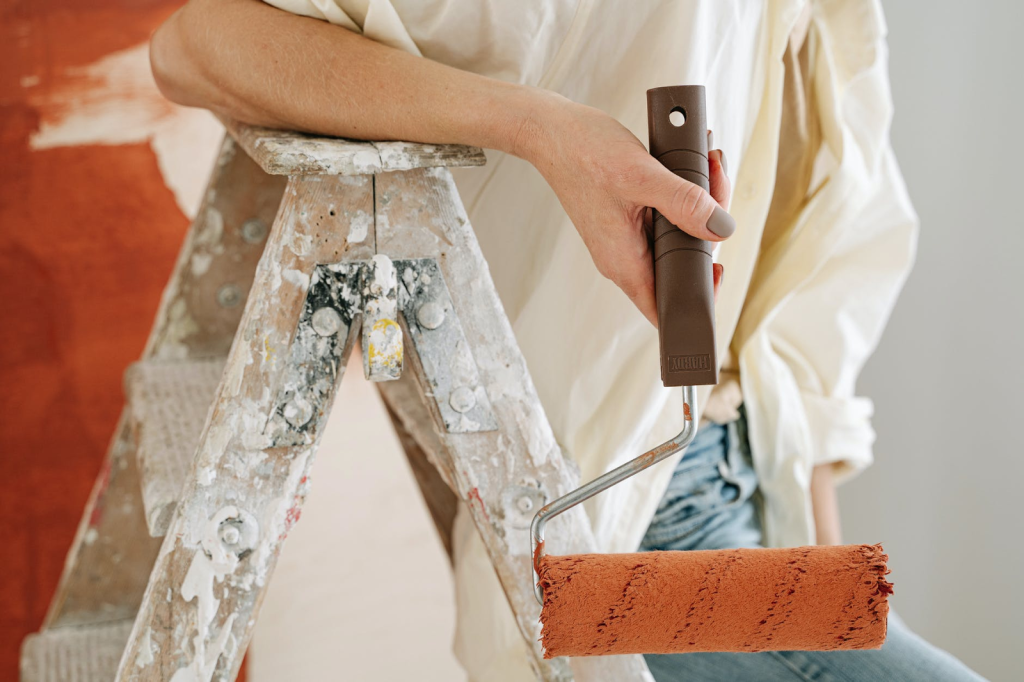
Whether you need to prime before painting depends on the wall’s texture, material, and desired finish. Paint primer acts as a base coat, prepping surfaces like walls, woodwork, and furniture. While similar to paint, primer boasts a higher viscosity and includes a bonding agent. In some cases, it resembles plaster or a coating more than paint. It safeguards the surface and ensures a smooth, ideal finish for paint adhesion. Although not every project demands priming,understanding the influencing factors is key to deciding if it’s necessary.
When Should You Prime the Walls?
Applying primer might seem unnecessary, but it’s almost always beneficial before painting walls. Primers are essential for new drywall and outperform glossy or semi-gloss paints. Here are key reasons to prime your walls.
Stains and Odor
Walls with damage or stains benefit from primer before painting. Fresh paint can reveal blemishes like drawings or grease. Lighter paint colors highlight surface flaws. If your walls need hiding, primer is essential.Choose a primer that hides fungus or mildew stains, but remember it won’t fix underlying moisture issues. Address the source of the problem first. Then, prep and paint. Even after painting, odors like tobacco smoke might linger.
Porous Surface
For porous walls, apply primer before painting. Porous surfaces readily absorb moisture, humidity, grease, odors, and stains. New drywall is a prime exmaple of a porous material. Without primer, moisture can damage the paper and joint compound. Unprimed surfaces may excessively absorb paint.Similarly, untreated or unstained wood is also permeable.
after drywall repairs, you might notice spackle or bonding agent residue. For small spots, skip the extra primer. Use a bit of your regular paint for light touch-ups on the repaired areas. Once fully dry, paint the entire surface. This ensures the repaired spots won’t show through.
Glossy Finish
Polished surfaces pose a significant challenge for paint adhesion. Multiple coats might fail to stick properly. This is especially true for surfaces with high-shine paint, lacquer, or damaged wood paneling. While priming is essential,sanding or burnishing the surface beforehand is highly recommended. This step creates the necessary roughness for the primer and paint to bond effectively, ensuring a lasting finish.
Drastic Change in Color
Priming is almost always essential when transitioning from dark to light paint colors. Vibrant color schemes often look best over lighter, less intense base colors. Avoid applying numerous paint layers by priming over dark, bold colors before applying your desired white. Gray is a popular primer choice for covering surfaces before applying strong colors. Research suggests it helps the eye perceive strong hues more effectively.
Wallpaper
typically, removing wallpaper before painting is wise. Though, painting over wallpaper can sometimes be beneficial. First, it protects the drywall or concrete underneath. Removing old or multiple layers of wallpaper can damage walls. Leaving the wallpaper preserves the wall’s existing condition. Second,painting over wallpaper simplifies and speeds up the painting process. Wallpaper removal is tedious and time-consuming,which many homeowners prefer to avoid.
When to Skip the Primer of Walls?
Should you prime your walls? It’s a common question. paint manufacturers introduced self-priming paints years ago, suggesting priming isn’t always needed. However, the effectiveness of this approach is still debated. There are situations where priming might not be necessary. If a surface is already painted and in good shape, without cracks or peeling, you might skip priming. Interior walls needing minor touch-ups or repainted in a similar color often don’t require priming. We’ve compiled factors to help you decide when to skip priming your walls.
Self-Priming Paint
Self-priming paint is essentially a thicker variant of standard paint. Its increased viscosity allows for enhanced build and coverage. While using a separate primer and paint is generally advised, a paint-primer combo can work if surfaces are in good condition. However, self-priming paint isn’t a worldwide solution. A thick paint layer can lead to a weaker finish and extended drying times. Moreover, the higher cost per unit and potential need for multiple coats might negate any time or cost savings.
Healthy walls
If your surfaces are pristine and well-maintained, you might skip primer.Cleaning is straightforward. Wipe walls with a mild solution of tri-sodium phosphate (TSP) and water using a clean, soft cloth. Now you’re ready to paint!
Paint of Similar Color
Primer can also be used to refine the color, ensuring vibrant and accurate results. priming becomes less crucial when the existing and new colors are similar. If the old and new colors are nearly identical, priming might be considerably reduced or even unnecessary. the base color might not be different enough to impact the topcoat’s final look.
